 |
 |
 |
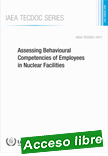 |
Assessing Behavioural Competencies of Employees in Nuclear Facilities
IAEA-TECDOC-1917 | Published 2020 | 128 pages
This publication provides guidance and recommendations to nuclear organizations by offering a practical approach to assessing the behavioural competencies for safe, secure and effective performance across the nuclear workforce. It outlines a variety of tools and approaches that can aid the behavioural assessment processes and provides both general and role-specific recommendations to improve the quality of selection, promotion, training and development decisions.
|
Also addressed in the publication are challenges, key issues and critical considerations for assessment practices. This guidance can be used by Member States as a foundation upon which to develop or improve a comprehensive behavioural competency assessment programme and contribute to building a sustainable nuclear workforce comprised of high performing nuclear professionals.
|
 |
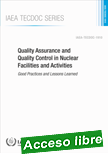 |
Quality Assurance and Quality Control in Nuclear Facilities and Activities: Good Practices and Lessons Learned
IAEA TECDOC No. 1910. | Published 2020 | 132 pages
This publication explains the concepts of quality assurance and quality control. It provides examples, illustrated by good practices, of their implementation within the processes of the management systems of nuclear facilities and describes how they are managed through interfaces with suppliers and subcontractors. The publication discusses the elements of a management system relevant for the quality assurance and quality control functions, such as the generation and retention of documented information.
|
The information presented will help in ensuring the safe and economic operation of nuclear facilities and provide a neutral technical basis for dialogue between government bodies, regulators, plant operators and suppliers when dealing with management system, quality assurance and quality control issues.
|
 |
 |
Management of Spent Fuel from Nuclear Power Reactors
Learning from the Past, Enabling the Future
Proceedings of an International Conference Held in Vienna, Austria, 24–28 June 2019
STI/PUB/1905 | Published 2020 | 331 pages
This publication presents the proceedings of the IAEA International Conference on the Management of Spent Fuel from Nuclear Power Reactors, held in 2019, with the theme ‘Learning from the Past, Enabling the Future’. The purpose of the event was to provide a forum for the exchange of information on national spent fuel management strategies and on the ways in which a changing energy mix could influence these strategies and on how they support the achievement of national energy goals.
|
The broad scope of the conference covered all stages of the management of spent fuel from the past, present and future technologies, and how it can be affected by the decisions taken in the rest of the nuclear fuel cycle. The event brought together experts from countries with decades of nuclear power operating experience and those from countries currently developing or considering a nuclear power programme. The importance of sharing data, operational experience, lessons learned and international collaboration in research and development (R&D) activities, and how its development and implementation can lead to attainable solutions was highlighted. Special attention was given to the young generation of professionals to support bridging the gap with the current ageing industry workforce.
|
 |
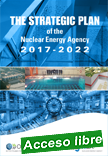 |
The Strategic Plan of th Nuclear Energy Agency
2017 - 2022
Nuclear Energy Agency | Organisation for Economic Co-operation and Development
This Strategic Plan is intended to guide the NEA as it seeks to meet the evolving needs of member countries in the application and exploration of nuclear science and technology. The plan includes an executive summary as well as an introduction which describes the context in which the Strategic Plan has been prepared. It sets out the NEA mission statement and general strategies, and describes specific NEA activities, sector by sector.
|
The plan then highlights the governance of the Agency and explains interactions with external organisations and groups, including those within the OECD family. The basis of authority for the Nuclear Energy Agency and its activities is presented in the Annex.
|
 |
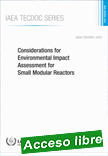 |
Considerations for Environmental Impact Assessment for Small Modular Reactors
IAEA-TECDOC-1915 | Date Published 2020 | 44 pages
There is renewed interest in Member States in the development and deployment of small modular reactors (SMRs). Specific technical characteristics of this reactor type introduce new deployment possibilities. This publication provides current information on considerations about environmental impact assessments (EIAs) related to SMRs. Under many regulatory regimes, the EIA report is a prerequisite for licensing and an important tool to confirm that the potential site is suitable for the future construction and operation of a reactor.
|
Therefore, this publication which discusses approaches to address specific issues related to the EIA for SMRs will be of use to technology holders and licensing authorities.
|
 |
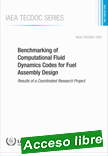 |
Benchmarking of Computational Fluid Dynamics Codes for Fuel Assembly Design
IAEA-TECDOC-1907 | Date Published 2020 | 66 pages
This publication draws on the work carried out during an IAEA coordinated research project to benchmark computational fluid dynamics (CFD) codes used in fuel assembly design and model options and methods against ‘CFD quality’ experimental data under single phase flow conditions. It presents the results obtained by seven participating institutes from six Member States, all with currently operating water cooled reactors.
|
The publication provides a description of the omni flow experimental loop test facility used for benchmark experiments related to the phenomena of fuel assembly spacer grid induced flow mixing. The focus of the benchmark was on the downstream region after the spacer grid. The comparisons between the experimental measurements and the CFD calculations are hence focused on the average velocity, the fluctuating velocity (turbulence), and local cladding temperatures in this region.
|
 |
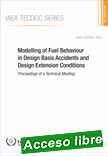 |
Modelling of Fuel Behaviour in Design Basis Accidents and Design Extension Conditions
IAEA TECDOC No. 1913 | Date Published 2020 | 218 pages
This publication is the result of an IAEA technical meeting and reports on Member States’ capabilities in modelling, predicting and improving their understanding of the behaviour of nuclear fuel under accident conditions. The main results and outcomes of a coordinated research project (CRP) on this topic are also presented.
|
|
 |
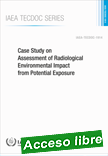 |
Case Study on Assessment of Radiological Environmental Impact from Potential Exposure
IAEA-TECDOC-1914 | Date Published 2020 | 194 pages
This publication presents a set of examples of different approaches for estimating potential exposures in different countries based on participants’ experience and considering the IAEA Safety Standard on a generic framework for consideration of radiological environmental impact, including potential exposures. It is intended to support the development of a common understanding in assessing the population health risks from potential accident scenarios in a nuclear power plant.
|
This publication will contribute to further improvement of the INPRO (International Project on Innovative Nuclear Reactors and Fuel Cycles) methodology for sustainability assessment of nuclear energy systems (NESs) and can help Member States applying this methodology to perform a NES assessment in the areas of safety and environment. The publication is intended for use by organizations involved in development and deployment of NESs including planning, design, modification, technical support and operation of nuclear power plants.
|
 |
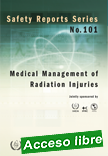 |
Medical Management of Radiation Injuries
Safety Reports Series No. 101| STI/PUB/1891 |Date Published 2020 | 98 pages
This publication focuses on the medical management of individuals involved in radiation emergencies, especially those who have been exposed to high doses of ionizing radiation. Its primary objective is to provide practical information, to be used for treatment decisions by medical personnel during a radiation emergency. It also addresses general and specific measures for the medical management of individuals who have been internally contaminated with radionuclides.
|
This publication is complementary to other publications developed by the IAEA in the medical area of radiation emergencies.
|
 |
 |
| |
|
|

|
|
|
| |
|
|
| |
| |
|
|
| |
| |
|
|
| |
| |
|
|
|
| |
| |
